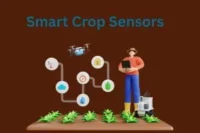Planting Techniques: The Foundation of Every Successful Harvest
Published: 20 May 2025

Planting sounds simple—just put seeds in the ground, right? But then there are terms like broadcasting, dibbling, transplanting, and no-till, and suddenly it all feels a bit overwhelming. How deep should the seed go? How far apart should they be? Should I use a machine or do it by hand? With so many choices and so much riding on this first step, it’s hard to know what really works. Is there even a right way, or does it all depend on the crop, the soil, or something else entirely?
So, guys, without wasting time, let’s jump into the article to learn the Planting Techniques: The Foundation of Every Successful Harvest
What Are Planting Techniques?
- Planting techniques refer to the methods used to place seeds or seedlings into the soil.
- These techniques consider factors like depth, spacing, row orientation, moisture conditions, and equipment.
- Good technique ensures even germination, strong root development, and efficient use of nutrients and water.
- Different crops and environments require different planting approaches.
Why Planting Techniques Matter More Than Ever
- A poorly planted seed may never germinate or grow unevenly.
- Modern agriculture demands precision to increase yield per acre while preserving resources.
- With unpredictable weather and limited land, planting techniques help maximize efficiency and minimize waste.
- Proper methods reduce weed pressure, conserve moisture, and improve soil health.
Types of Planting Techniques
- Direct Seeding
- Seeds are planted directly into the soil where they will grow.
- Cost-effective and time-saving; common in cereals and grains.
- Transplanting
- Seedlings are grown in nurseries and then moved to the field.
- Used for crops like rice, vegetables, and fruit trees for higher survival rates.
- Broadcasting
- Seeds are scattered manually or by machine over a wide area.
- Simple but can result in uneven growth and waste.
- Drilling
- Seeds are placed in rows at controlled depths and spacing using seed drills.
- Highly efficient, especially for cereals and legumes.
- Dibbling
- Seeds are placed in small holes at equal distances.
- Suitable for small-scale or vegetable planting.
- Raised Bed Planting
- Plants are grown on elevated soil beds for better drainage and root development.
- Ideal in heavy rainfall or waterlogged areas.
- No-Till Planting
- Seeds are planted without disturbing the soil from previous seasons.
- Reduces erosion, conserves moisture, and improves soil structure.
Factors That Influence Planting Technique Selection
- Crop type and root system
- Soil condition and moisture content
- Field slope and drainage
- Equipment availability
- Climate and seasonal patterns
- Farm size and labor resources
Benefits of Using the Right Planting Techniques
- Promotes uniform germination and crop maturity
- Maximizes yield and reduces input waste
- Conserves water and prevents soil erosion
- Reduces competition from weeds
- Enhances nutrient uptake and plant health
- Improves labor efficiency and cost-effectiveness
Common Mistakes to Avoid
- Planting too deep or too shallow
- Incorrect spacing leading to overcrowding or poor coverage
- Ignoring soil moisture levels
- Using unsuitable equipment for the crop or terrain
- Planting at the wrong time of season
Planting Techniques and Sustainable Farming
- Techniques like no-till and raised beds help protect soil integrity.
- Precision planting reduces fertilizer and pesticide runoff.
- Efficient methods lower environmental impact while increasing productivity.
- Aligns with climate-smart and regenerative agricultural practices.
Tips for Improved Planting Results
- Always test soil before planting to adjust depth and spacing.
- Choose the right equipment for the crop and field conditions.
- Consider cover cropping to prepare the field and enrich the soil.
- Use GPS and smart tech for row accuracy in large-scale farming.
- Monitor and adapt your technique based on past results.
FAQs about Planting Techniques
Here are some of the most frequently asked questions about the Planting Techniques: The Foundation of Every Successful Harvest
Planting techniques are methods used to sow seeds or transplant seedlings for optimal growth, yield, and soil use.
Transplanting and raised bed planting are ideal for vegetables due to better spacing, drainage, and root development.
Correct spacing prevents overcrowding, ensures good airflow, and allows plants to access nutrients evenly.
Efficient techniques ensure uniform growth, stronger plants, and optimal use of water and nutrients, all of which boost yield.
Final Thought
Planting techniques are the cornerstone of every successful harvest, directly influencing crop health, yield, and sustainability. From soil preparation and seed selection to spacing, depth, and irrigation methods, each step plays a crucial role in establishing strong, resilient plants. By adopting precise and scientifically informed planting practices, farmers can optimize resource use, reduce environmental impact, and increase productivity. In an era of growing global food demand and climate challenges, mastering planting techniques isn’t just beneficial—it’s essential for long-term agricultural success.

- Be Respectful
- Stay Relevant
- Stay Positive
- True Feedback
- Encourage Discussion
- Avoid Spamming
- No Fake News
- Don't Copy-Paste
- No Personal Attacks

- Be Respectful
- Stay Relevant
- Stay Positive
- True Feedback
- Encourage Discussion
- Avoid Spamming
- No Fake News
- Don't Copy-Paste
- No Personal Attacks





